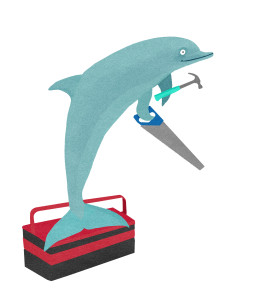
Knowing how many animals are in a population is at the cornerstone of many conservation and management decisions. For whales, dolphins & porpoises, ship time to estimate abundance can be prohibitively expensive — often running into the tens of thousands of dollars each day.
We’ve just launched our Animal Counting Toolkit to share some of the lessons we’ve learned over the years in conducting low-cost, small boat surveys for marine mammals in coastal waters. It was a lot of fun to publish this work with our colleagues at University of St Andrews, NOAA, IUCN, CyberTracker, BlueWater GIS, and other NGOs and consulting companies. This is a gentle introduction to designing and conducting a survey to estimate abundance of marine wildlife. It is not a substitute for statistical training, but it should provide a good background for data collection. For data analysis, we strongly recommend joining the Distance Sampling web community and taking the Distance workshops at University of St Andrews.
We published an open access paper introducing our Animal Counting Toolkit approach. Wherever possible, the approach prioritizes free software and tools. Our audience is the community of marine naturalists and scientists who may need a bit of guidance to ensure that their observations could be turned into a useful biodiversity monitoring program. We hope the Toolkit finds an audience among NGOs, grad students, coastal communities, and researchers working in countries where funding is severely limited. The US just passed a rule requiring countries to demonstrate that their fisheries are sustainable in terms of marine mammal bycatch. This rule affects $20 billion/year in seafood trade. It is driven in part by a need to level the playing field for US fisheries that have to comply with the Marine Mammal Protection Act and are competing with fisheries that are not MMPA-compliant. Used wisely, the new trade rule will use the purchasing power of the US market to create incentives to improve fisheries sustainability and transparency. But if it is imposed too harshly, and without funding for low-income countries to comply, the US risks penalizing countries that can least afford to take an economic hit. Our Animal Counting Toolkit was motivated in part by this new rule. We want to fill in important data gaps around the world, but we also see value in using this toolkit to help build local and regional capacity for countries to begin to do the kind of surveys that will be needed to demonstrate compliance with this new seafood trade rule. Our hope is to see countries actually improve sustainability of their fisheries, so that we reduce the number of marine mammals killed in fisheries while improving economic opportunities for people who earn their living from the sea.

